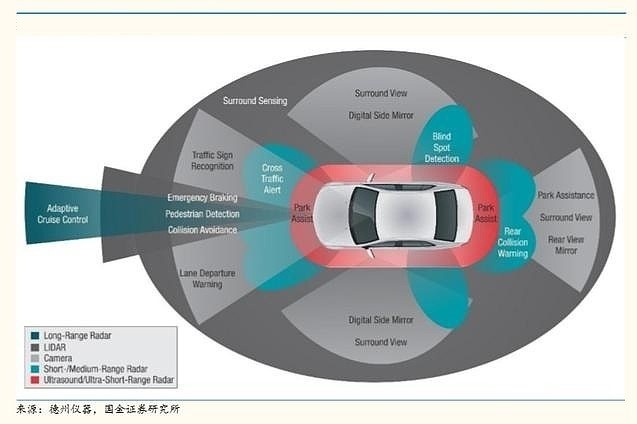With the rapid development of autonomous driving technology, sensors, as its core components, are becoming a new battlefield in the automotive industry. According to the latest forecast of the Yano Research Institute, the global ADAS/autonomous driving sensor market is expected to reach approximately 3.7 trillion yen by 2030, a figure that not only indicates the huge potential of the market, but also marks the fierce competition in sensor technology. In this race between radar and camera, who will dominate the future market has become the focus of attention in the industry.
Significant growth in demand for in-vehicle sensors
The demand for in-vehicle sensors, especially radars and cameras, as key to ADAS systems, is expected to continue to grow. With the rising global demand for ADAS functions and the higher requirements for automotive safety performance in various countries, the market size is expected to expand by about 2.4 times by 2023. This growth reflects not only the role of technological advancements in driving the market, but also consumers' pursuit of a safe and convenient driving experience.

Figure: Schematic diagram of autonomous driving sensors
Technological advancements drive the market
Technological advancements in ADAS cameras are another important driver for the development of the market. Currently, ADAS cameras installed in mass-produced cars are mainly 1.7 MP or 5.4 MP in pixels. However, with the imminent widespread adoption of 8MP cameras and the increased demand for 120-degree FOV (viewing angle), high-pixel products will become the new favorite of the market. This will not only improve the safety performance of the vehicle, but also promote the further development of related technologies.
Regional dynamics of the global market
The market dynamics of different regions also have a significant impact on the development of the ADAS/autonomous driving sensor market. ADAS adoption is approaching 100% in Japan, the United States, and Europe, and more than 80% in China. Demand from ASEAN and India is also expected to pick up significantly from 2028 onwards, which will further expand the global market.
Policies and safety standards
In order to comply with safety standards such as NCAP (New Car Assessment Program), the number of radars installed is expected to increase. This policy enablement, combined with the adoption of E/E (electrical/electronic) architecture in mid-range vehicles, is expected to increase the number of sensors installed per vehicle, thereby supporting the growth of the market.
Market competition and cooperation
In the global ADAS/autonomous driving sensor market, high technical barriers determine the high concentration of the market. Tier1 giants and chip leaders occupy a leading position in the market. Sensor technology is mainly monopolized by companies such as Aptiv, Bosch, Denso, and Continental, while companies such as Mobileye, Nvidia, and Qualcomm dominate the field of algorithms and chips. This competitive landscape has promoted the rapid development of technology and the wide promotion of applications.
summary
The rapid development of the ADAS and autonomous driving sensor market is the result of technological progress, market demand, policy promotion and industry cooperation. With the continuous maturity of technology and the continuous expansion of applications, it is expected that this market will usher in a broader development prospect in the next few years. At the same time, industry players need to pay close attention to market dynamics and grasp technology trends to cope with increasingly fierce market competition and changing customer needs.
In this race between radar and camera, we may see a trend of convergence where various sensors complement each other to build a more complete perception system. The future of autonomous driving does not only depend on the breakthrough of a single technology, but also requires a complex system that integrates multiple sensors and algorithms. Therefore, whether it is radar or cameras, they will become an indispensable part of autonomous driving, and together they will drive the intelligent automotive industry forward.






